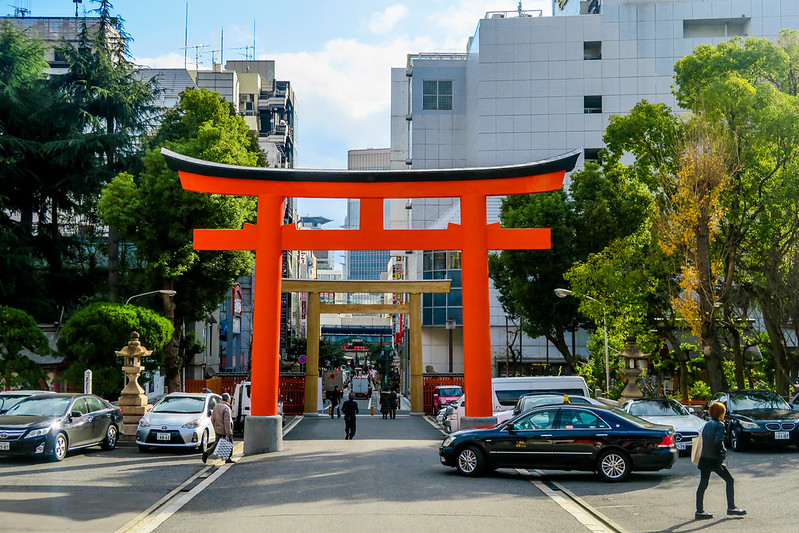
As I continue to feature Ikuta Shrine, located in the Chuo Ward of Kobe and is what may be one of the oldest shrines located in Japan, in the last blog post I wrote about going through the first torii (gate).
Now we are heading towards the second torii, where the first one wooden, this time we approach the next which is in vermilion red.
And to the right, you will see people at the these water-filled basins known as Chozuya or Temizuya and is a Shinto water ablution pavilion for ceremonial purification a.k.a. “temizu”.
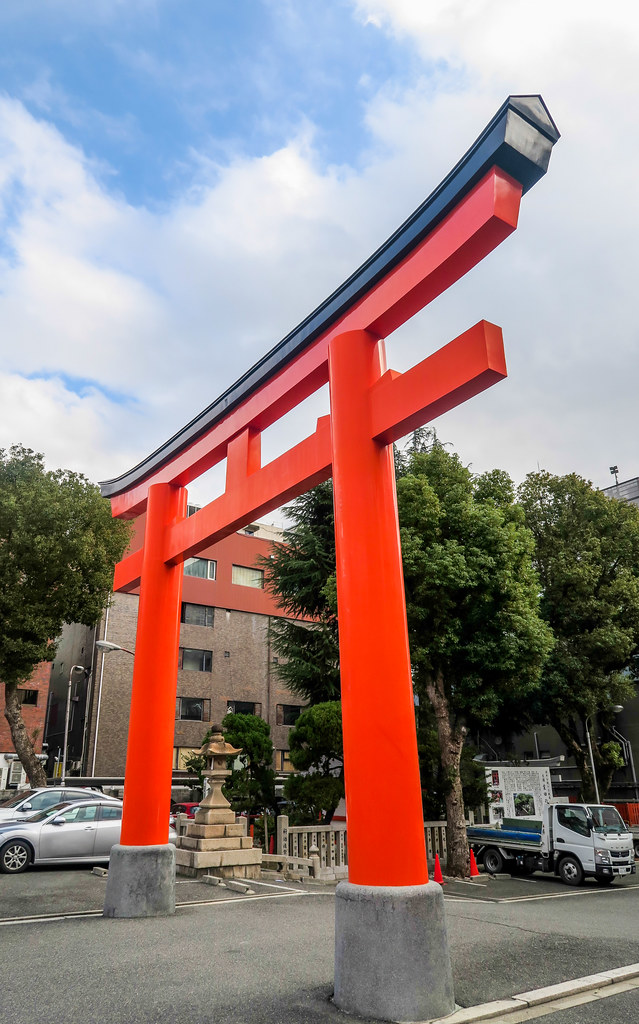
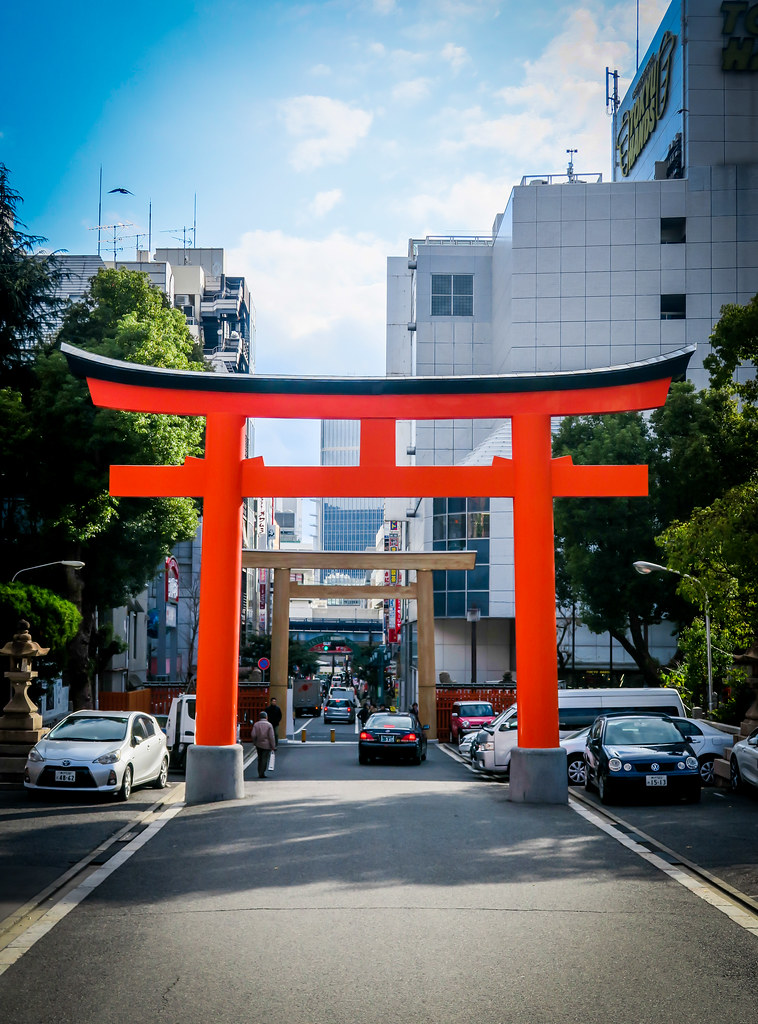
And around the second torii you will notice quite a bit of parking. Typically most shrines have the parking beyond the gates, but Ikuta Shrine has parking near the second gate.
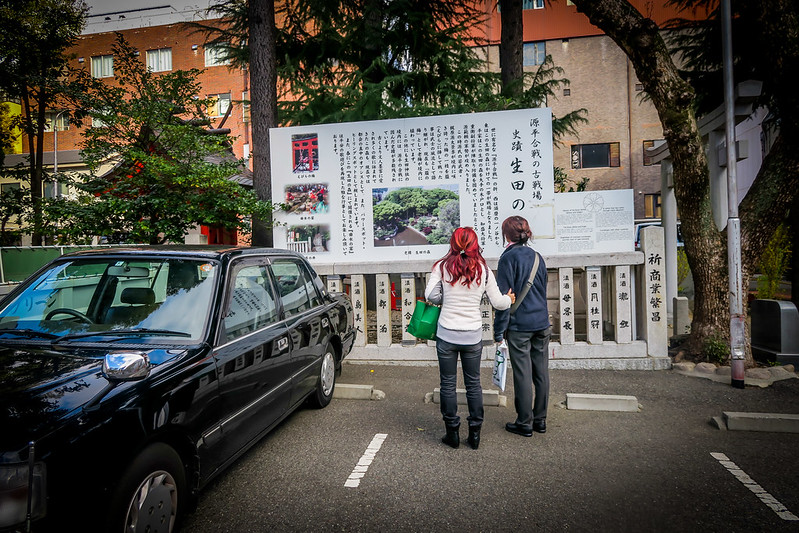
There is a signboard in the right hand side with information of Ikuta Shrine in Japanese and English.
The signboard states that the shrine is of the Goddess Wakahiru-me-no-Mikoto, whom legend relates as being either the peaeful spirit (nigi-mitama) of the highest deity in Japan, the Sun Goddess Amaterasu-Omikami, or her sister. She is the goddess of giving birth to all that is young, dewy and vital.
The found of the shrine is noted in the Nihon Shoki history as being in AD 201.
In AD 806, 44 kambe (court officials – fuko) who served shrines, were sent by the court to serve at this shrine, and it is from there that the name “Kobe” comes from.
According to the Heian periord work, Engishiki “when visitors from the Korean peninsula arrived in Japan, as state guests they were offered rice wine. Rice was caused to be brought from each region and within the precincts of the Ikuta shrine, the head priest brewed the rice wine and presenting it to the nobles from Korea. This is also said to be the origins of the Nada sake brand.
The forest and main hall of Ikuta were once the site of a battle in the Genpei War of 1184 and in more recent years it has suffered both natural and man-made disasters from heavy flooding from the river in 1938, the World War Two air raids on Kobe in 19845 and the damage from the Great Hanshin Earthquake in 1995. But each tie it has risen from the ashes, leading people to venerate it as the god of resurrection. At present, the forest thrives along with the great camphor tree in the middle of the city, providing an oasis of the residents.
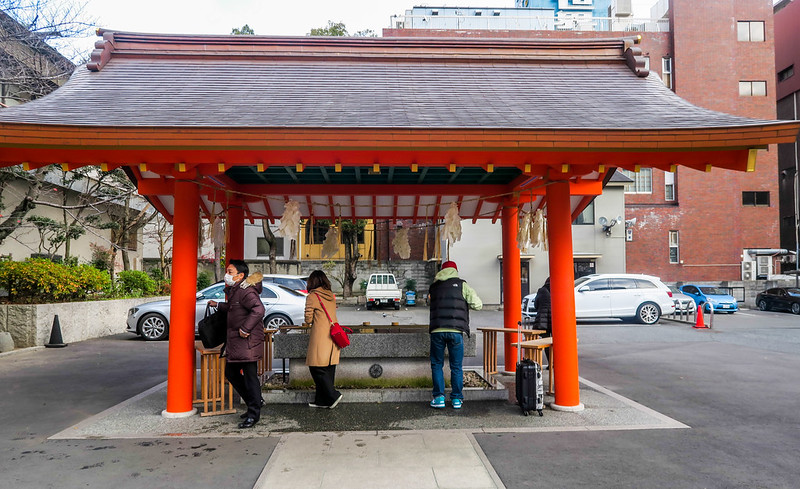


And fortunately, for those not familiar with the temizu can learn from the instructions in English:
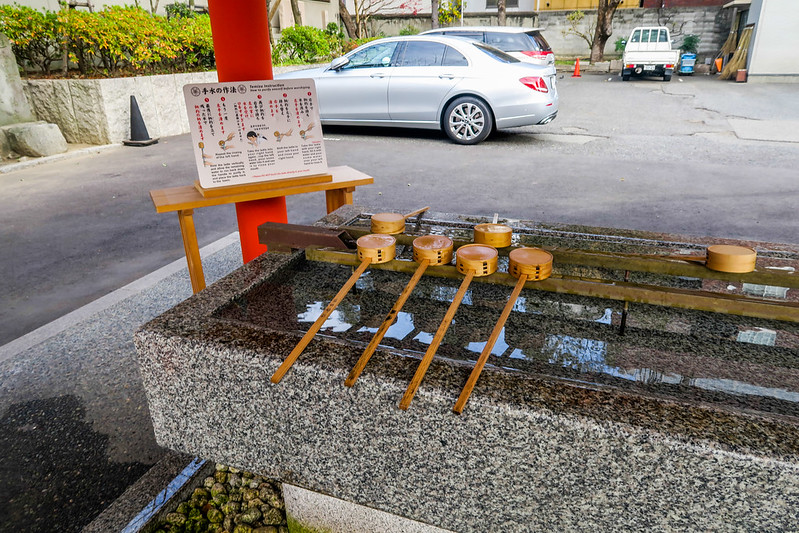
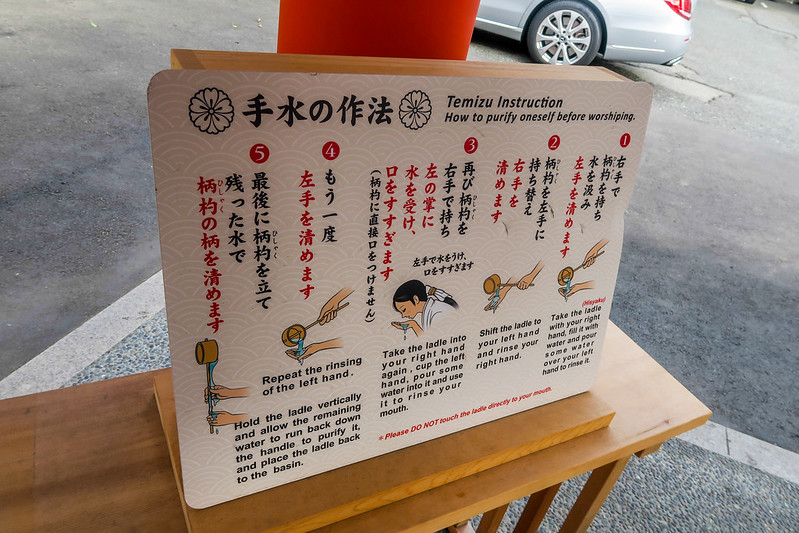
But after you are done with the Temizu, now it is time to go through the final major gate at the front which leads to Ikuta Shrine and I will discuss this in my next post.

The One about Ikuta Shrine in Kobe Part 1 – One of the Oldest Shrines in Japan/The First Torii
The One about Ikuta Shrine in Kobe Part 2 – The Second Torii
The One about Ikuta Shrine in Kobe Part 3 – One last gate before reaching Ikuta Shrine
The One about Ikuta Shrine in Kobe Part 4 – Ikuta Shrine
The One about Ikuta Shrine in Kobe Part 5 – Ikuta pond and multiple shrines
The One about Ikuta Shrine in Kobe Part 6 – Ikuta no Mori
The One about Ikuta Shrine in Kobe Part 7 (FINAL) – Ugano Mitama no Mikoto
